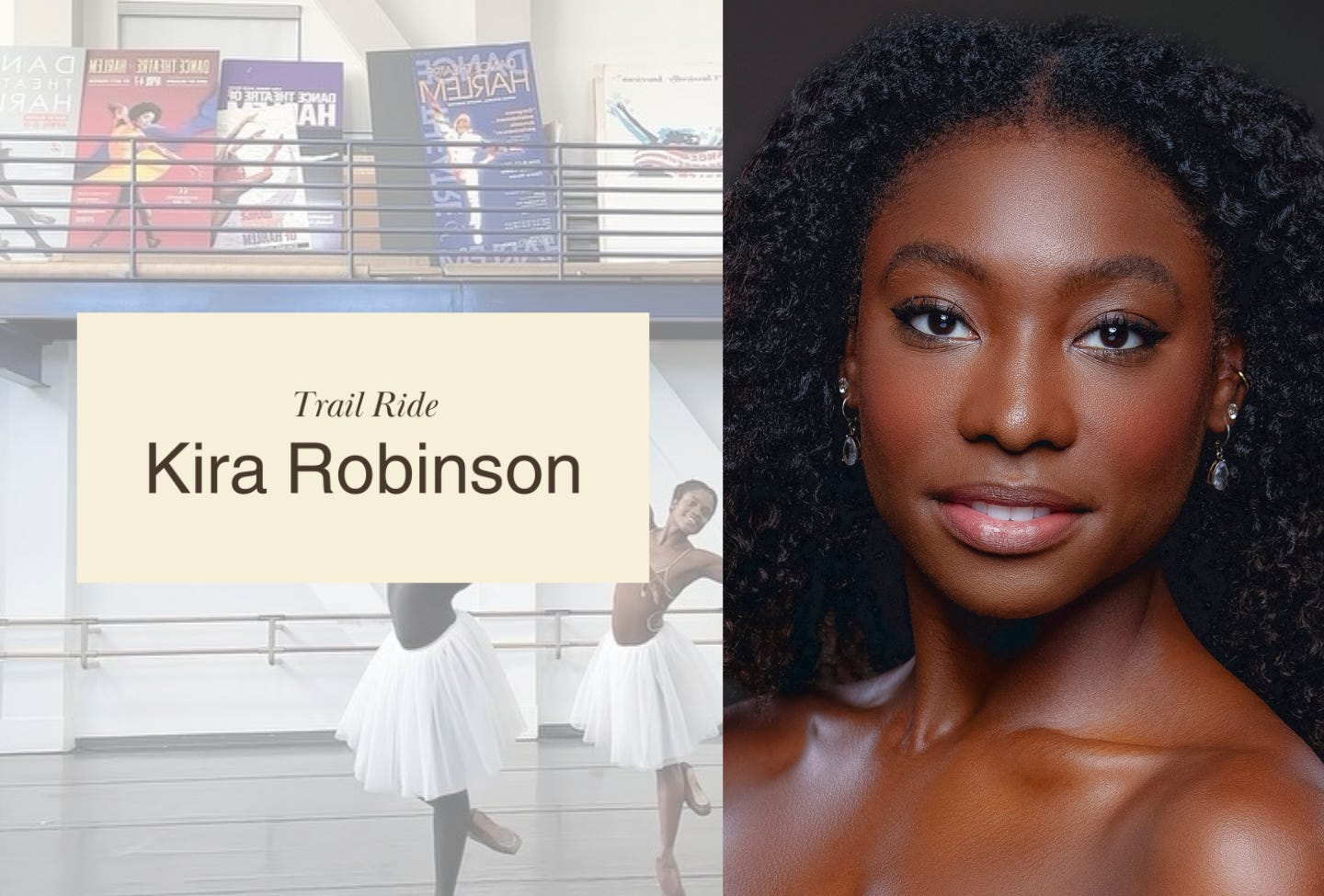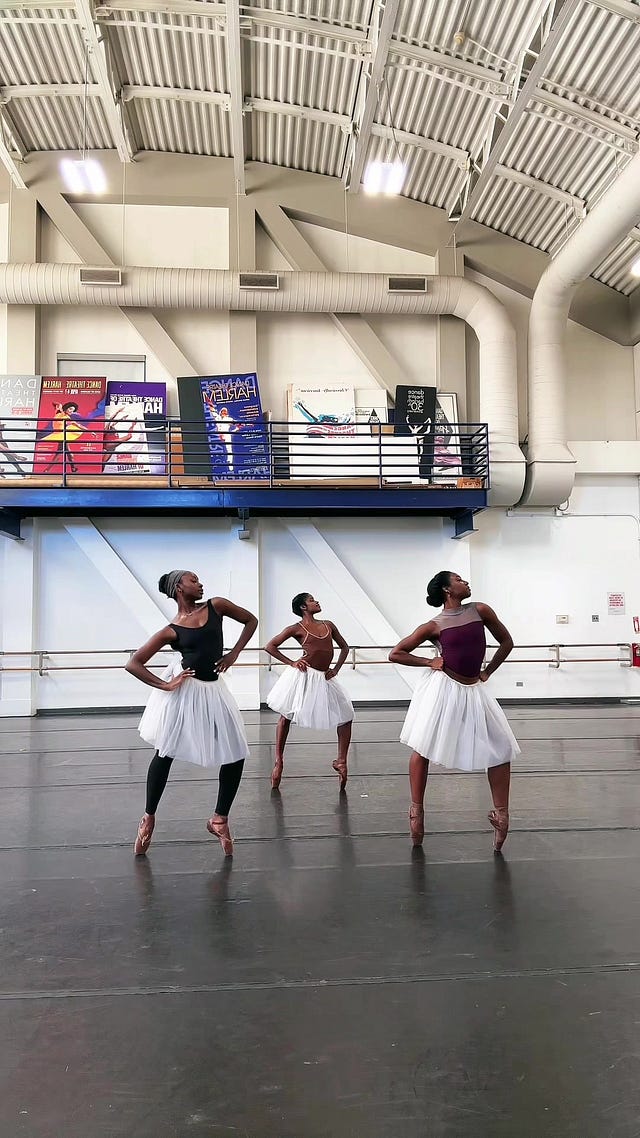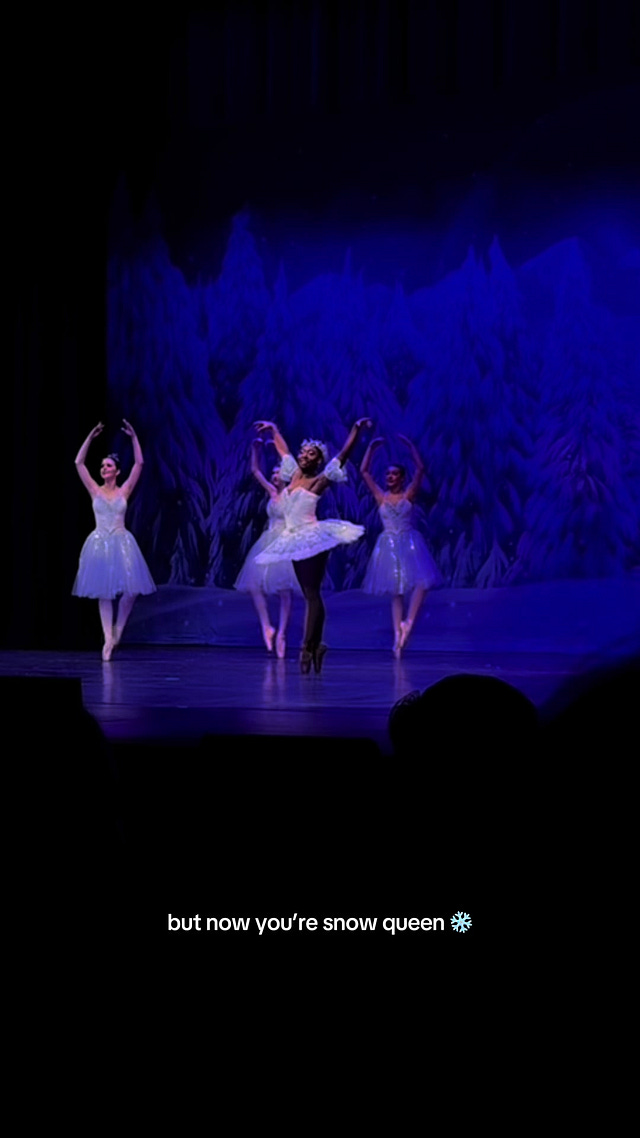Trail Ride: Dance Theatre of Harlem's Kira Robinson
The viral ballerina on pre-med and "balletcore."
Trail Ride is a Clotheshorse interview series dedicated to showcasing the style, creativity, and personal expression of folks whose perspectives on fashion and artistry inspire me — be they friends of mine or people I admire from afar. Join me!
In 2021, I was one of the half a million people on the internet who watched Kira Robinson, then a freshman ballet major at the University of Oklahoma, go viral after finally finding pointe shoes that matched her skin tone.
“I can’t tell you how revolutionary this is,” Kira said — glowing! — in the TikTok in question.
Kira discussed how in the past, she’s had to use a technique called “pancaking,” or blending makeup foundation on the shoes, to match her specific skin tone. The process isn’t costly, but also time-consuming. A professional ballerina can dance through 100-120 pairs of pointe shoes in one season. Let’s say one bottle of drugstore foundation costs $5. You can do the math from here.
Of course, ballet has a diversity problem beyond pointe shoes. Recent estimates suggest that just 2.27% of ballerinas are Black females; 4.45% of ballerinas are Black males.
"I received a lot of comments on my TikTok about how representation is super necessary in the dance world and how a lot of people don't have that or see that often," she later told Good Morning America.
For the last four years, I’ve been one of Kira’s 208,000 TikTok followers, cheering her on through our respective screens as she graduated from college — as a pre-med student, mind you! — and pursued her professional dreams as a company member at the famed Dance Theatre of Harlem, which she joined last summer.
In the ballet world, especially in New York City, Dance Theatre of Harlem is an institution, recognized as one of the most influential American ballet companies since its founding in 1969. Today, much of its impact remains a testament to co-founder Arthur Mitchell, the first Black principal dancer at the New York City Ballet and protégé of George Balanchine, the Russian-born dancer, choreographer, and co-founder of the School of American Ballet. Mitchell’s inspiration to start the company is said to have been spurred by the assassination of Martin Luther King Jr. in 1968.
I was so grateful to have this opportunity to speak with Kira, someone whose grace (both physical and emotional) has inspired me, a former and sometimes current ballet dancer, for many years now. You can read our conversation (and peruse my little selection of authentic “balletcore” goodies) below!
Maura: I know you started dancing at an early age, but what inspired you to pursue ballet, specifically?
Kira: I was always moving around as a kid, so my parents originally put me in gymnastics, and that didn't last for very long. Then they switched me over to cheerleading, so I started with recreational cheer, and then they also were like, I feel like she could also do really well in dance, so they put me in dance at the same time that I was doing cheerleading and I just continued with that until I was 13. I did ballet, of course, but I did other styles of dance, which I feel like definitely helped better prepare me for like where I am now — contemporary, hip-hop, tap, jazz.
When I was 13, my teacher told me I had to choose between dance and cheer. I was always just kind of good at dance, but I didn't see it as a career for myself at that moment in time. But then when I when I turned 13, I was like, Okay, I think I could I could do this! So I decided I wanted to stick with ballet and went and trained with the Atlanta Ballet for five years. That was more intense ballet training; I got to work with the company and learn how to be in a professional setting.
From there, I decided I wanted to go to college. I was on a pre-med track while I was in college and I graduated with a degree in ballet performance from the University of Oklahoma.
I had wanted to ask you about your decision to pursue pre-med. Tell me about your interest in medicine!
I’ve always been interested in medicine because that's my whole dad's side of my family; basically, all of them are doctors. I grew up around it. My grandpa was very, very influential in the medical field as a person of color. I always wanted to do it. But when I got to college, it was hard, especially with my labs and rehearsals. I really had to stay on top of communicating with my professors. But again, I've always been super ambitious, even with doing dance and cheer at the same time. That helped me be better with time management.
I took a lot of STEM classes and labs and had to be studying while I was in between rehearsals. It was hard, but I'm glad I did it because it definitely taught me resilience. My plan after I finish dancing professionally is that I want to go to med school. We'll see how that goes. I have no idea what I want to be. I've been shadowing doctors every now and then when I have breaks.
I'm sure you hear all the time about how impressive you are and how impressive that is. But it’s true. And I think ballet teaches you such a specific type of discipline, right? Are there any medical fields in particular you’re interested in?
Well, that's a funny question because last year if you had asked me that, I would have said orthopedic surgery, but then when I went and shadowed doctors last summer, I was like, Yeah, no, this isn’t for me. So I think I'm leaning a little bit away from surgery, but I'm more interested in physical therapy. I'm thinking I want to work with dancers and give back in that way.
That’s amazing. You’ve performed in some really renowned works, like “Serenade” and “Giselle.” “Giselle” is my favorite ballet. Is there one performance you've done thus far that stands out to you?
To just pick one is really, really hard. Can I pick two?
The first one was from my junior year in college. We got to tour Mexico and perform a piece called “Falling Angels,” which is by Jiří Kylián, who is very, very well-renowned choreographer. And it's just eight girls, for 16 minutes. You're on stage the entire time.
Wow.
Yeah, it was so physical. But at the same time, it was extremely empowering because it's just eight women together and you're cheering each other on through the energy on stage. The music is a metronome so you have to be counting the entire dance in your head and if you get off or you forget a count , you're completely off-track and it's hard to get back on. It took a lot a lot of training and practice, but I remember feeling on top of the world after the last performance we did in Mexico.
Then the second one is going to be the first time I actually saw Dance Theatre of Harlem perform in 2023. They did this piece called “Nyman,” which is choreographed by Robert Garland, the company’s current artistic director. A dancer does a solo in it midway through and it brought me to tears. And I was like, Oh my god, I want to dance here. It was just two minutes, but it was so beautiful. And so I actually debuted in that ballet two or three weeks ago on tour. That was really, really cool to be able to have that full-circle moment.
Oh, absolutely. Beyond someone like Robert Garland, are there any other choreographers or even dancers who inspire you again and again?
Michaela DePrince, for one. She recently passed away, but she was so incredibly inspiring to me. And then also Ingrid Silva, who is in the company currently. So that's been crazy, just being in the studio with her now and still almost idolizing her.

I wanted to ask you about this rising interest in hyper-feminized"balletcore" aesthetics in fashion and pop culture. What are your thoughts?
There’s definitely a huge gap between what the media thinks balletcore is and what it actually is. I think it's interesting because there's a lot of dancers on TikTok and Instagram and you can see what they wear, and it’s not the same thing as what balletcore is. It's funny you say that balletcore is very hyper-feminized because that’s almost the complete opposite of how we like dress for like class, right? We wear a lot of baggy clothes. It's not meant to be pretty.
But at the same time, I love the romanticizing aspect of it. It captures the whimsical side of dance and I think people are leaning more toward how we appear on stage, back to the traditional roots of ballet — like the fairy-floating-on-air kind of vibe.
I love that people are embracing the elegance of ballet in everyday fashion. But ballet is more than just an aesthetic.
I love that this trend has influenced more and more people to take beginner adult classes.
Oh my gosh. Yeah, that makes my heart so happy. I get so excited when I see those videos.
To keep up with Kira, follow her on Instagram and TikTok, and consider seeing her perform and supporting her work at Dance Theatre of Harlem here.
Its annual New York City homecoming season and Vision Gala takes place April 10-13 at New York City Center. You can get tickets for all performances here.
xx,
Maura
A note to readers: Clotheshorse may occasionally include affiliate links if I’m recommending a product I love, but I’ll never promote anything I don’t use and/or enjoy myself!













love this!!